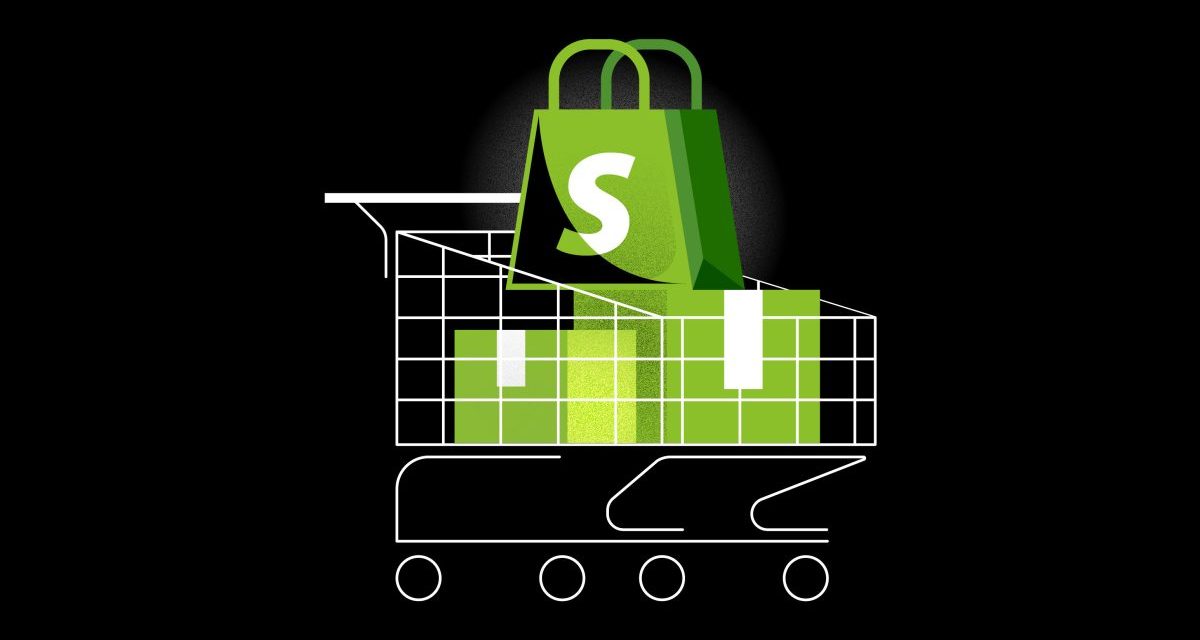Shopify is rolling out a store fulfillment option for its brick-and-mortar merchants

Shopify is continuing to seek ways to tap into the fulfillment side of its merchants’ businesses, this time going through the point-of-sale systems used by store associates.
Shopify Editions, the biannual roundup of updates from the e-commerce platform, published on Wednesday. As expected, many items apply to the online side of retail operations — like an AI-powered search improvements, and adding more color swatches to product description pages. But other notable updates relate to retail activities off the screen.
In particular, Shopify POS customers will have a new ‘ship from store’ feature meant to help address inventory and fulfillment challenges. This will be available to those who sign up for early access before being rolled out to all POS customers. The feature will work as a menu option in the POS system that shows all incoming orders and their fulfillment status. Associates will be able to see what orders need to be fulfilled and can pick, pack and ship the item from their location.
“We are setting up the foundations, not for a specific product, but for how all of these products fit together and how they together become something that’s bigger than the sum of its parts,” Carl Rivera, vice president of product at Shopify, told Modern Retail. “We’re basically saying, ‘Okay, what does it take to run a business? And how can we make that easier?'”
Allbirds is one customer that has expressed potential interest in the feature, according to a Shopify spokesperson. The footwear brand has nearly 60 retail locations. Micah Nelson, director of product management, said in an email that turning stores into “little fulfillment centers” allows the brand to serve demand while maintaining lean inventory. “That equates to millions of dollars of opportunity for us,” he wrote.
This blurring of the line between online and physical stores is an important growth area for Shopify, which says that its offline GMV went up by 26% last quarter. Shopify wouldn’t share how many POS terminals are in use, but it continues to roll out new services.
Last August saw the launch of the Retail Plan for brick-and-mortar businesses, which gives them a POS system and a simple online storefront, with plans starting at $89 a month. The company also introduced a new enterprise-level POS terminal that can operate as a mobile or counter system, priced at $349 a device. And Shopify has already offered an in-store order option, where customers can get something shipped to their home if it’s not available in store.
Ad position: web_incontent_pos1
But tackling an area as cumbersome as logistics has proven a challenge for the entrepreneurial company. Shopify’s past attempts date back 2019 when it first launched its fulfillment network, and acquired 6 River Systems. Then in 2022 is spent $2.1 billion to acquire fulfillment startup Deliverr. But by May 2023, Shopify announced it was selling off its logistics business.
This time, Shopify’s take on fulfillment doesn’t require the company to touch or manage any inventory. Rather, it’s up to the retailer what they want to keep on hand and where they want to ship it from. Rivera said the ‘ship from store’ feature makes sense for stores with retail staff who may have downtime in their shifts — or those retailers that are looking to develop a bigger store presence from the ground up.
“This is one of those features that can change the retail footprint of companies that run on Shopify, where they can perhaps now expand to more stores have a have a stronger global retail presence,” Rivera said.
Other updates in editions this year include a new line of credit offering, and a term loan product — operating as complementary products to the eight-year-old Shopify Capital program that’s doled out $5 billion since 2016. There were also multiple developer-side updates like a rollout of its subscription services to all customers. Shopify also announced a host of marketing updates, including more options for retargeting and an expansion of Shop Campaigns. Rivera said this development comes from feedback from merchants that are struggling with higher customer acquisition costs.
Bill Thayer, founder and CEO of logistics provider Fillogic, works with many clients that use Shopify’s tech platform. While he said the company has a strong knack for the e-commerce side, he added that trying to break into retailer logistics could prove challenging because it’s not a uniform service that can work out of the box. Retailers need options, he said.
Ad position: web_incontent_pos2
“Everybody’s problems are different, and even if they might have the same problem, they may not have the same priorities,” he said.
Ship from store services can be challenging for small merchants because there are many human-centered pieces of the operations that can lead to delays or mistakes — like someone not scanning a bar code directly. And it could be cost prohibitive for small businesses to pay a delivery service. “If you’re a mall-based retailer and not doing e-commerce then you haven’t started working with parcel carriers,” he said. “The cost can tick up, fulfillment is pretty expensive.”
He said another concern with fulfillment systems can be the links between the inventory when there are multiple places that are selling. “If you’re using a Shopify POS and not on the digital side, your inventory can get messy real quick,” Thayer said.

